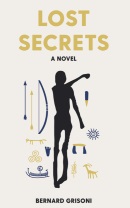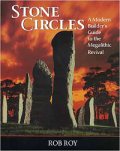<< Our Photo Pages >> Tell Halaf - Ancient Village or Settlement in Syria
Submitted by AlexHunger on Tuesday, 21 November 2006 Page Views: 16609
Multi-periodSite Name: Tell Halaf Alternative Name: Tall Halaf, Guzana, GosanCountry: Syria
NOTE: This site is 55.877 km away from the location you searched for.
Type: Ancient Village or Settlement
Nearest Town: Al Qamishli Nearest Village: R'as al 'Ayn
Latitude: 36.822809N Longitude: 40.041151E
Condition:
| 5 | Perfect |
| 4 | Almost Perfect |
| 3 | Reasonable but with some damage |
| 2 | Ruined but still recognisable as an ancient site |
| 1 | Pretty much destroyed, possibly visible as crop marks |
| 0 | No data. |
| -1 | Completely destroyed |
| 5 | Superb |
| 4 | Good |
| 3 | Ordinary |
| 2 | Not Good |
| 1 | Awful |
| 0 | No data. |
| 5 | Can be driven to, probably with disabled access |
| 4 | Short walk on a footpath |
| 3 | Requiring a bit more of a walk |
| 2 | A long walk |
| 1 | In the middle of nowhere, a nightmare to find |
| 0 | No data. |
| 5 | co-ordinates taken by GPS or official recorded co-ordinates |
| 4 | co-ordinates scaled from a detailed map |
| 3 | co-ordinates scaled from a bad map |
| 2 | co-ordinates of the nearest village |
| 1 | co-ordinates of the nearest town |
| 0 | no data |
Be the first person to rate this site - see the 'Contribute!' box in the right hand menu.
Internal Links:
External Links:
Tell Halaf is an archaeological site that dates back to the 6th millennium BCE in the Al Hasakah governorate in northeastern Syria in the fertile Khabur river valley (Nahr al Khabur), near the Turkish border. It was the first find of a Neolithic culture, subsequently dubbed the Halafian culture, characterized by glazed pottery painted with geometric and animal designs.
The Halaf people made female figurines of partially baked clay and stone and stamp stone seals. The seals are thought to mark the development of concepts of personal property. The Halafians used stone and clay tools and knew of Copper but did not use it for tools. Halafian structures were constructed of mud-bricks, sometimes on stone foundations and may had ritual use due to a large number of female figurines found. The tholoi of Arpachiyah had a circular domed structures approached through long rectangular anterooms.
The Halaf culture developed from the Neolithic in a linear fashion until about 5300 BCE. The Halafian culture was then replaced in northern Mesopotamia by the Ubaid culture. The site was then abandoned for a long period. In the 10th century BCE, the site became the capital of the Aramaean Guzana city-state. King Kapara built the Hilani palace in a Neo Hittite style with statues and relief orthostats.
From 894 BCE, the site became tributary to the Assyrians and was reduced in 808 BCE to a Assyrian province. The governor's palace was in the eastern part of the citadel mound. An Assyrian style temple in was discovered in the lower town. Guzana remained inhabited until Roman-Parthian Period.
Tell Halaf was rediscovered in 1899 by Baron Max von Oppenheim, a German diplomat and Banking heir, while he was surveying the area to build the Baghdad Railway. He excavated the site between 1911 and 1913 and then again 1929. Von Oppenheim displayed many of the found artefacts in his private Berlin Tell Halaf museum, which was unfortunately bombed to near oblivion in WWII. The fragments of the artefacts found again under the rubble are now being restored by the Berlin Pergamom museum. This project is scheduled to be finalised in 2008 and displayed in 2010. The site is also currently being excavated again with German suport.
You may be viewing yesterday's version of this page. To see the most up to date information please register for a free account.














Do not use the above information on other web sites or publications without permission of the contributor.
Click here to see more info for this site
Nearby sites
Click here to view sites on an interactive map of the areaKey: Red: member's photo, Blue: 3rd party photo, Yellow: other image, Green: no photo - please go there and take one, Grey: site destroyed
Download sites to:
KML (Google Earth)
GPX (GPS waypoints)
CSV (Garmin/Navman)
CSV (Excel)
To unlock full downloads you need to sign up as a Contributory Member. Otherwise downloads are limited to 50 sites.
Turn off the page maps and other distractions
Nearby sites listing. In the following links * = Image available
62.5km NW 309° Sefer Tepe* Ancient Village or Settlement
66.8km W 270° Bazda Cave* Cave or Rock Shelter
72.1km WNW 295° Karahan Tepe* Ancient Village or Settlement
74.5km WNW 290° Harbetsuvan Tepesi Ancient Village or Settlement
81.3km ESE 121° Tell Tuneinir Ancient Village or Settlement
84.5km WNW 303° Kurt Tepesi Ancient Village or Settlement
88.3km W 268° Kucuk Hedbe Ancient Village or Settlement
88.9km ENE 73° Urkesh* Ancient Village or Settlement
89.9km NW 311° Tasli Tepe Ancient Village or Settlement
89.9km W 273° Harran* Ancient Village or Settlement
90.0km NW 311° Başbük Ancient Village or Settlement
91.4km SE 138° Shadikanni Ancient Village or Settlement
92.3km E 101° Tell Brak* Ancient Village or Settlement
108.8km WNW 294° Göbekli Tepe* Ancient Temple
110.2km ENE 73° Girnavaz* Ancient Village or Settlement
111.2km WNW 288° Gürcütepe Ancient Village or Settlement
113.7km WNW 285° Hamzan Tepe Ancient Village or Settlement
117.3km WNW 288° Yeni Mahalle Ancient Village or Settlement
125.4km NNE 29° Hakemi Use Tepe Ancient Village or Settlement
126.3km E 89° Tell Qarassa* Ancient Village or Settlement
126.8km NNE 31° Ziyaret Tepe Ancient Village or Settlement
129.6km S 188° Zalabiye Ancient Village or Settlement
129.7km SW 225° Tuttul Ancient Village or Settlement
130.2km WNW 285° Sayburç* Ancient Village or Settlement
130.2km WNW 282° Çakmaktepe Ancient Village or Settlement
View more nearby sites and additional images






 We would like to know more about this location. Please feel free to add a brief description and any relevant information in your own language.
We would like to know more about this location. Please feel free to add a brief description and any relevant information in your own language. Wir möchten mehr über diese Stätte erfahren. Bitte zögern Sie nicht, eine kurze Beschreibung und relevante Informationen in Deutsch hinzuzufügen.
Wir möchten mehr über diese Stätte erfahren. Bitte zögern Sie nicht, eine kurze Beschreibung und relevante Informationen in Deutsch hinzuzufügen. Nous aimerions en savoir encore un peu sur les lieux. S'il vous plaît n'hesitez pas à ajouter une courte description et tous les renseignements pertinents dans votre propre langue.
Nous aimerions en savoir encore un peu sur les lieux. S'il vous plaît n'hesitez pas à ajouter une courte description et tous les renseignements pertinents dans votre propre langue. Quisieramos informarnos un poco más de las lugares. No dude en añadir una breve descripción y otros datos relevantes en su propio idioma.
Quisieramos informarnos un poco más de las lugares. No dude en añadir una breve descripción y otros datos relevantes en su propio idioma.